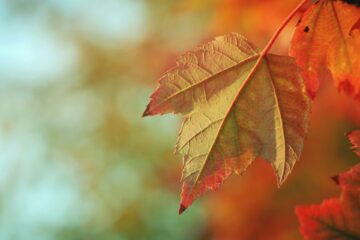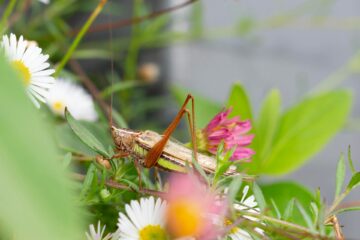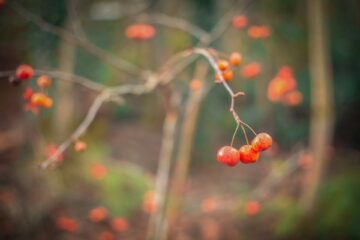Gardening tools can be some of the most expensive things you buy, especially if you’re new to gardening. But I’m here to tell you that a good set of tools will last for years, so it’s worth investing in quality ones. In this list, I’ll talk about the top 10 gardening tools that every gardener needs to have.
Hand trowel
The hand trowel is one of the most versatile gardening tool and can be used for digging, planting, weeding and transplanting. It’s also great for removing weeds and planting small plants or bulbs in the ground.
Pruning shears
Pruning shears are a must-have gardening tool. They’re great for cutting back plants, branches, stems and flowers–in fact, you can use them to trim just about anything in your garden. And they’re not just useful for pruning! You can also use them to harvest herbs or vegetables (or even fruit trees) without damaging the plant’s roots.
Watering can – essential gardening tools
- A watering can is a container that you use to water your plants.
- It comes with a spout, handle and lid for easy transport and storage.
- There are many different materials used for the construction of watering cans: metal, plastic or ceramic.
Lawn mower
If you have a lawn, you need a lawn mower. The most important tool to keep control of any grass in your garden.
A good lawn mower will help you keep your grass neat and trim, but it also means you don’t have to worry about cutting off any trees or bushes as they grow into something dangerous and unsightly (like weeds). A high quality electric model is best because it’s faster and easier than gas-powered models—but if you’re willing to spend some extra money on an older-model petrol one then that’s fine too! Just make sure that whatever type of power source your machine uses has been approved by the British Standards Institute (BSI).
Now let’s look at how best to use these essential items so we can find out what makes them so effective in helping us achieve our gardening goals.”
Lawn edger
Lawn edgers are an essential tool for any gardener. They can be used to trim grass around flower beds and lawns, as well as edges on driveways and sidewalks. The best way to use a lawn edger is by cutting small sections at a time rather than trying to cut large swaths all at once.
When purchasing your first lawn edger, consider what size of blade will work best for you in terms of how much material needs trimming each time you use it. A smaller blade will allow for more precision when using it on smaller areas like sidewalks or walkways; however this might take longer due to not being able to make quick passes over areas with thin vegetation (such as flowers). If you have thicker grasses such as Bermuda then choose one that has more power behind its cutting action!
The second thing which should go into consideration when choosing between different types of blades is how much pressure they apply onto their target surface – this can help prevent damage caused through excessive wear over time so try out several different models before making your decision based solely upon price tag rather than quality itself.”
Hedge trimmer or pruning saw
Hedge trimmers are a must-have for any gardener. They’re useful for trimming hedges, shrubs and other plants that grow in your yard. The tool has a long handle with blades that cut through branches up to 1/2 inch thick.
You’ll also need pruning saws to make sure your garden stays healthy and looking good throughout the seasons. These tools come in different sizes depending on what kind of job you’re doing–they can range from small handheld models to larger versions with extra features such as an adjustable blade angle or laser guide lines for precision cutting accuracy.
Spade – probably the most important gardening tools
A spade is a gardening tool with a long handle and a flat blade. It’s used for digging, cutting and lifting soil from the ground. A spade can also be called a shovel, but there are some differences between them:
- Shovels have shorter handles than spades do. They’re also more likely to have pointed tips instead of flat ones (which makes them better for digging).
- Spades tend to be heavier duty than shovels, since they’re designed for harder work in rocky soil or compacted clay.
Fork
A fork is a tool with tines on one end and a handle on the other. It’s used to loosen soil, dig up plants, aerate the soil and break up clumps of soil.
Forking should be done at least once per month during warm months or every three weeks during cooler times of year (and you may need more frequent forking if your garden has been neglected).
Rake and cultivator – essential gardening tools.
Rakes and cultivators are useful gardening tools for loosening soil, aerating soil, weeding and raking leaves. A rake is a long-handled tool with teeth or tines that can be used to loosen the top layer of soil or pull small weeds out of your garden. A cultivator has shorter tines than a rake and is designed for digging into the ground to break apart clumps of dirt so that water can penetrate more easily into the roots of plants.
Wheelbarrow/garden cart.
The wheelbarrow is one of the most essential tools for gardening. Why? Because it can help you move materials from place to place with ease, making it much easier for you to get around your garden.
What should I look for in a wheelbarrow?
There are many different types of wheelbarrows available on the market today, but there are three main things that make up an effective tool: size (how big), durability and price point. The right size will depend on how much material needs to be moved; if you have a small yard or garden then something smaller would work better than having one that’s too large and cumbersome when full. Durability is important because you aer likely to be moving around heavy items. Lastly price point matters because sometimes spending more money upfront won’t save money over time if certain parts break down frequently due to poor manufacturing processes.
So, if you’re looking to get started with gardening, these are the ten tools that will make your life easier! They cover everything from digging and weeding to pruning and cutting grass.
Keep on top of your gardening with our free online journal
Our free online tool allows you to organise your ideas and garden plans and help you be as efficient as possible in the garden.
Sign up now

